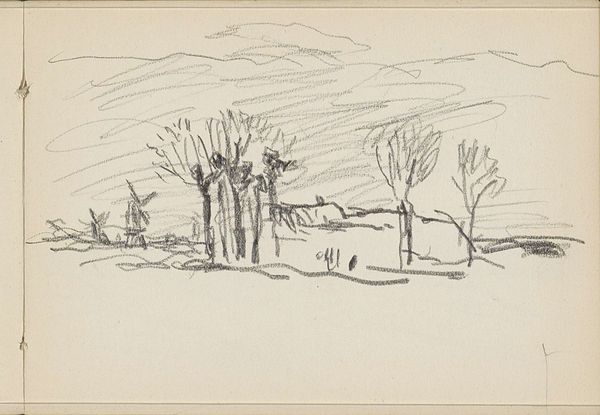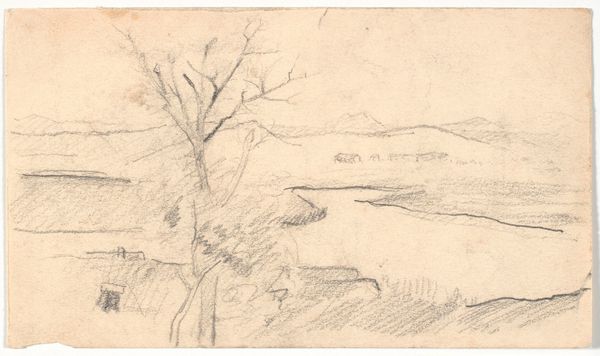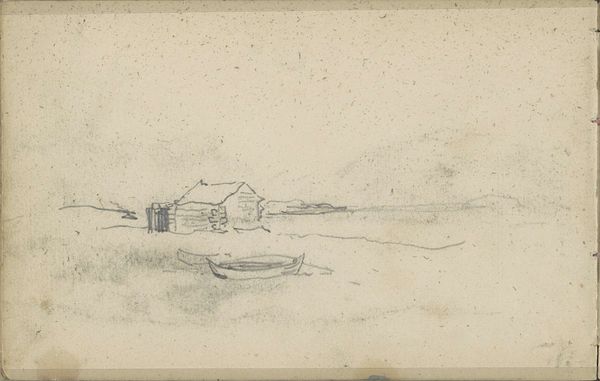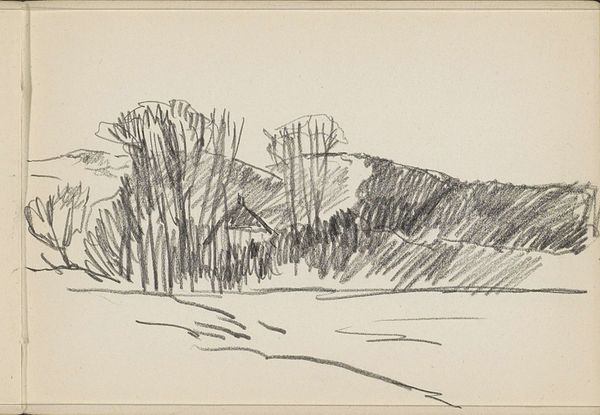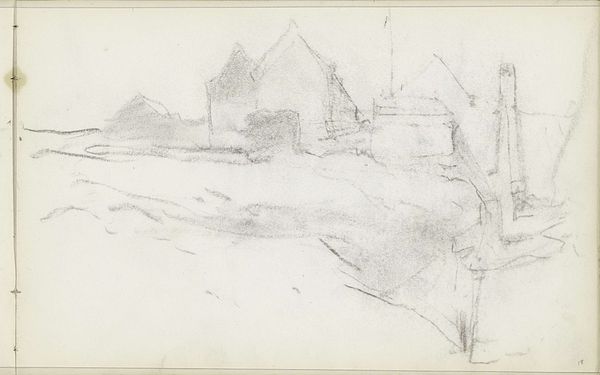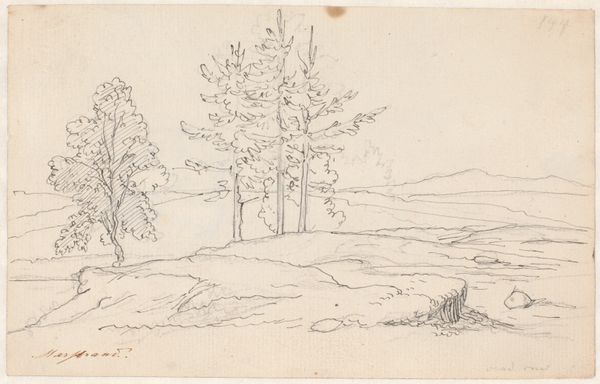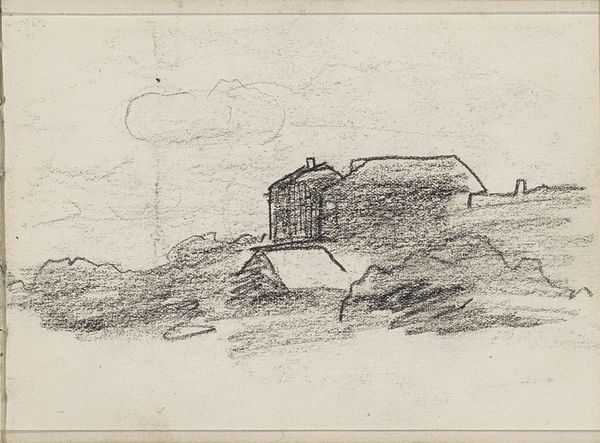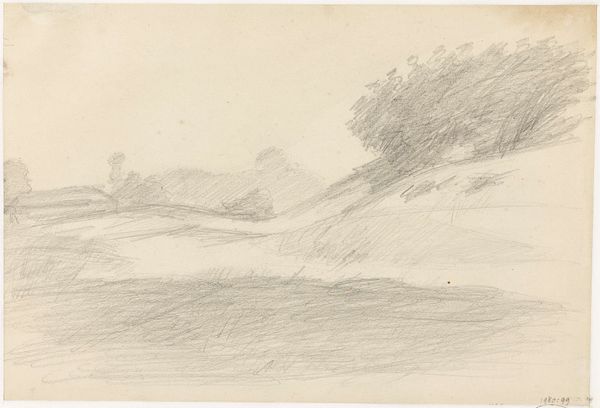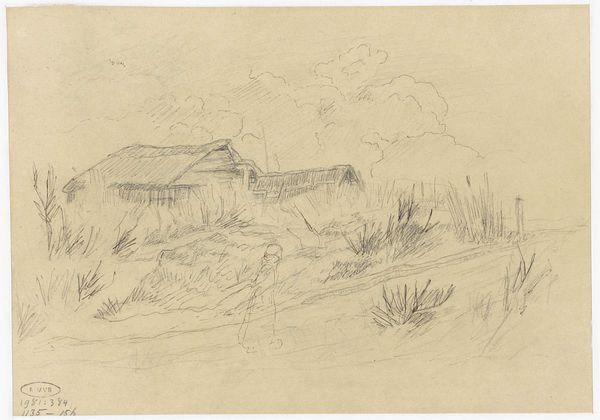
Dimensions: 128 mm (height) x 212 mm (width) (billedmaal)
Curator: What strikes me first is its unassuming tranquility, that hushed feeling, you know? As if I’ve stumbled upon a memory… Editor: That’s a lovely response. The work is called “Landskab med et hus”—Landscape with a House—penciled into being around 1902 or 1903 by Niels Larsen Stevns. It’s currently held at the SMK, the Statens Museum for Kunst. Curator: "Penciled into being" - I like that! It does feel…emergent, like a thought catching form on paper. Editor: Absolutely. It feels immediate, yes? Quick strokes conjure a quiet scene. What does a lone house in a vast field suggest? For me, it whispers of land ownership, class, and our precarious relationship with the natural world. Curator: Yes, the house anchors that question for me, but before analysis, what captivates is a lonely sort of hopefulness that emerges despite everything, do you get that feeling, too? A place I’ve been. Editor: That feeling certainly tempers the sociopolitical dimensions. It evokes the fraught history of pastoral landscapes and a deep romantic connection to the Danish countryside. Stevns lived through significant social upheaval and industrial change, after all. Did the burgeoning cities create nostalgia for simpler times? Curator: Oh, cities always steal something vital, don’t they? Nostalgia's a potent force—sometimes a cage. Editor: Indeed, though perhaps the simplicity we read into landscapes is a projection, erasing the labour and tensions that existed beneath the surface of the canvas. But getting back to the aesthetic—it's that almost blurry definition that keeps pulling me in to see it… a drawing but a drawing of light! Curator: The smudged effect allows the pencil to capture light's elusive qualities— it has a haiku effect almost. I see in "Landskab med et hus" something primal about shelter. Safe, solid refuge under enormous sky… Thank you, Niels Larsen Stevns, for bringing a moment into quiet permanence. Editor: A beautiful meditation, locating art in that intersection of personal and structural feeling—art as witness, perhaps even a gentle invitation to grapple with history, land, and, ultimately, each other.
Comments
No comments
Be the first to comment and join the conversation on the ultimate creative platform.
